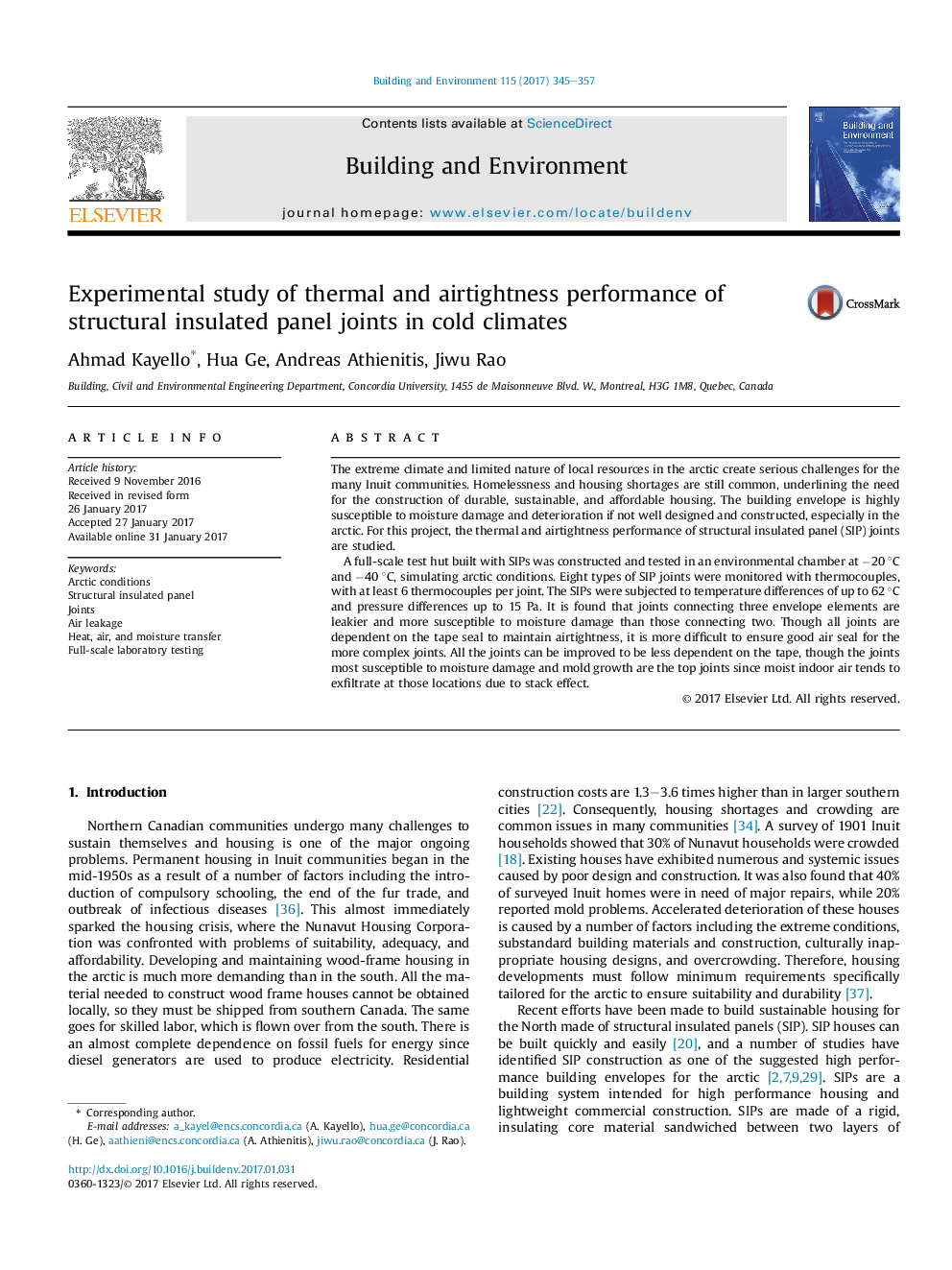| Article ID | Journal | Published Year | Pages | File Type |
|---|---|---|---|---|
| 4911555 | Building and Environment | 2017 | 13 Pages |
Abstract
A full-scale test hut built with SIPs was constructed and tested in an environmental chamber at â20 °C and â40 °C, simulating arctic conditions. Eight types of SIP joints were monitored with thermocouples, with at least 6 thermocouples per joint. The SIPs were subjected to temperature differences of up to 62 °C and pressure differences up to 15 Pa. It is found that joints connecting three envelope elements are leakier and more susceptible to moisture damage than those connecting two. Though all joints are dependent on the tape seal to maintain airtightness, it is more difficult to ensure good air seal for the more complex joints. All the joints can be improved to be less dependent on the tape, though the joints most susceptible to moisture damage and mold growth are the top joints since moist indoor air tends to exfiltrate at those locations due to stack effect.
Related Topics
Physical Sciences and Engineering
Energy
Renewable Energy, Sustainability and the Environment
Authors
Ahmad Kayello, Hua Ge, Andreas Athienitis, Jiwu Rao,
